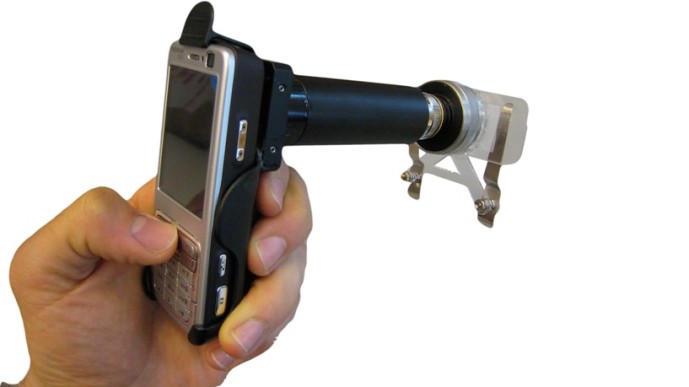Create Low-Cost Cell Phone-Based Solutions for Improved Uptake and Coverage of Childhood Vaccination (Round 7)

Roadblock:
Each year approximately 25 million infants do not receive the necessary immunizations, and at least 2.4 million children die from vaccine-preventable diseases—approximately 14 percent of deaths in children under 5. Millions more survive, but are left severely impaired. The long-term effects of these childhood illnesses limit the ability of those who survive to become educated, to work, or to care for themselves or others.
One of the major challenges of immunization programs in the developing world is maintaining robust year-to-year vaccination coverage for children. While there are many factors contributing to vaccine availability and distribution, cell phones and related technologies may be particularly useful for tracking which children have received which vaccinations, and efficiently connecting needy children with available vaccines.
At the same time, the UN predicts that cell-phone ownership will reach 5 billion in 2010, with most growth occurring in the developing world. This proliferation of cell phones and connectivity offers an unprecedented opportunity to access vast populations, including previously hard-to-reach populations in rural areas. Cell phones also provide previously unavailable capabilities in the developing world, including computational power, text and image displays, imaging, incentive structures, and standardized interfaces that can be leveraged to create powerful systems.
The effort to improve vaccine delivery has met with a number of challenges for which solutions are not readily available. The following have been identified in particular:
- Positively identifying an individual infant/child for developing world vaccination programs. Knowing a child's identity is essential for recording the administration of a vaccination or for looking up the child's history if it's available. However, names and addresses are not consistently used and can be difficult to record, even in paper based systems. ID's printed on cards can get lost or destroyed. Due to rapid growth rates, robust biometric data for children are especially difficult to find and validate;
- Rapidly determining the immune status of an infant/child at the point of vaccination. Determining the immune status, including the natural and vaccine-related correlates of immunity in a rapid point-of-vaccination would aid in determining vaccine penetration and efficacy in target populations;
- Connecting vaccine availability with target populations. Often, vaccinations are offered only for a short period, and need to serve an extended geographical area. As this can involve a great deal of travel and associated cost, ensuring that patients have timely and accurate information on where and when vaccinations are to be offered can increase participation, enhancing coverage and penetration.
What We’re Looking For:
The goal of this topic is to solicit innovative approaches to address the roadblocks listed above. We seek proposals that may be "off the beaten track" and daring in premise, and are clearly differentiated from approaches currently being developed or employed. Proposals must (i) have a testable hypothesis, (ii) include an associated plan for how the idea would be tested or validated, and (iii) yield interpretable and unambiguous data in Phase I if they are to be considered for Phase II funding.
A few of the many specific examples to be considered include:
- Systems that leverage cell phones to efficiently connect available vaccine with target infant/child populations;
- Biometric technologies that are based can inexpensively be integrated into cell phones that are effective for infants and young children;
- Novel low-cost methods to determine immune status at Point-of-Care that discriminate between vaccine-induced immunity and naturally-occurring immunity;
- Biomarker-based or other methods to determine vaccination history of infant/child populations;
- Solutions that can determine the vaccination status of a target population.
We will not consider funding for:
- Applications that require entire target population to have cell-phones to receive benefit;
- Applications that do not address the special considerations of biometrics in infants/children;
- Solutions to determining immune status that do not take into account local disease presence and resulting natural immune response and vaccine-derived immune response;
- Applications that do not have a clear idea of the cellular infrastructure in the targeted geographical area, or require cell phone ownership of the targeted population;
- Applications that do not consider the particular needs of target populations, such as literacy, and cultural impact.
Grants will be selected on ability to create impact in the context of The Bill & Melinda Gates Foundation’s existing global health priorities.For more information on these priority global health conditions, please click here.